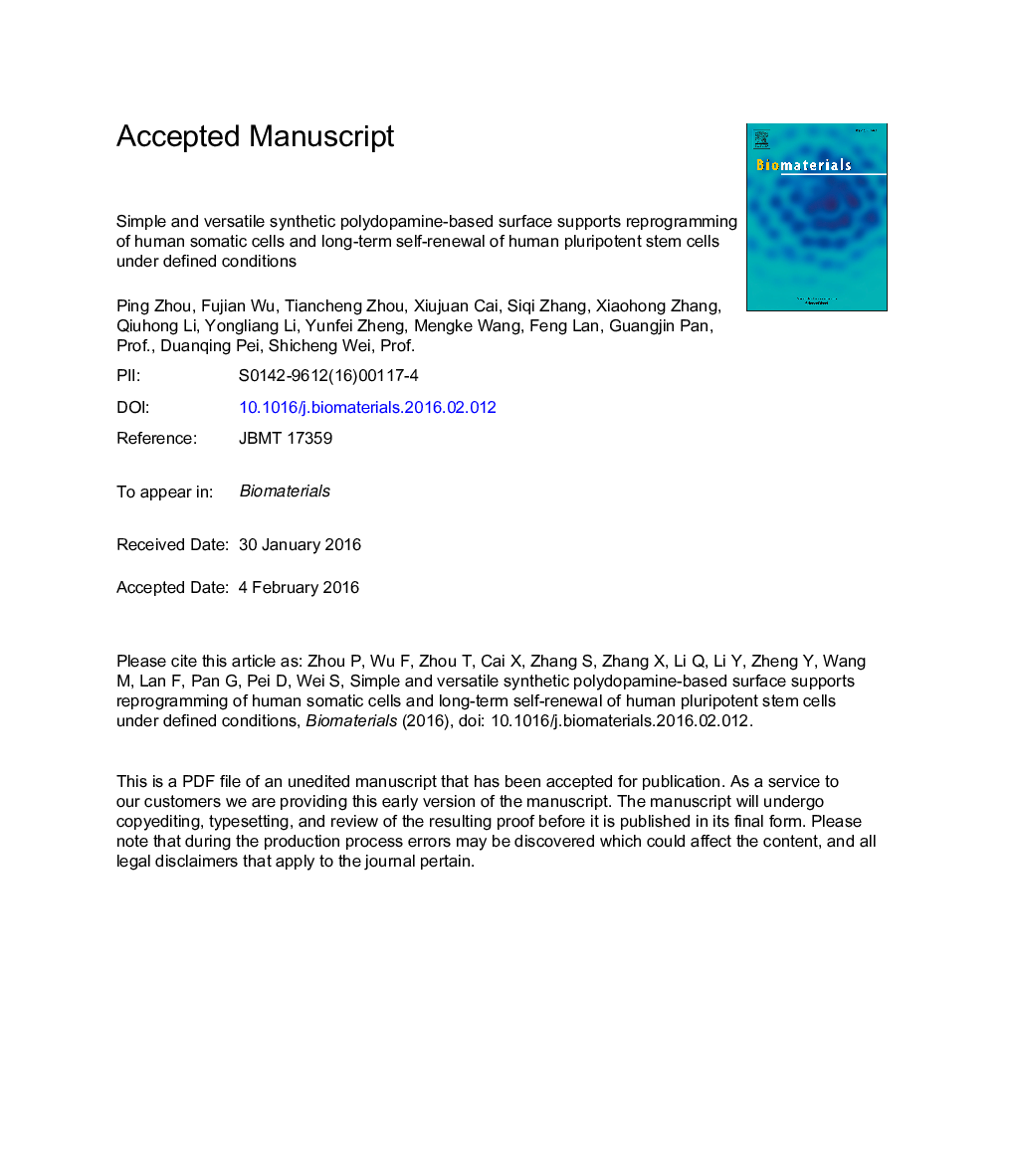| Article ID | Journal | Published Year | Pages | File Type |
|---|---|---|---|---|
| 6485036 | Biomaterials | 2016 | 52 Pages |
Abstract
Human pluripotent stem cells (hPSCs) possess great value in the aspect of cellular therapies due to its self-renewal and potential to differentiate into all somatic cell types. A few defined synthetic surfaces such as polymers and adhesive biological materials conjugated substrata were established for the self-renewal of hPSCs. However, none of them was effective in the generation of human induced pluripotent stem cells (hiPSCs) and long-term maintenance of multiple hPSCs, and most of them required complicated manufacturing processes. Polydopamine has good biocompatibility, is able to form a stable film on nearly all solid substrates surface, and can immobilize adhesive biomolecules. In this manuscript, a polydopamine-mediated surface was developed, which not only supported the reprogramming of human somatic cells into hiPSCs under defined conditions, but also sustained the growth of hiPSCs on diverse substrates. Moreover, the proliferation and pluripotency of hPSCs cultured on the surface were comparable to Matrigel for more than 20 passages. Besides, hPSCs were able to differentiate to cardiomyocytes and neural cells on the surface. This polydopamine-based synthetic surface represents a chemically-defined surface extensively applicable both for fundamental research and cell therapies of hPSCs.
Keywords
Related Topics
Physical Sciences and Engineering
Chemical Engineering
Bioengineering
Authors
Ping Zhou, Fujian Wu, Tiancheng Zhou, Xiujuan Cai, Siqi Zhang, Xiaohong Zhang, Qiuhong Li, Yongliang Li, Yunfei Zheng, Mengke Wang, Feng Lan, Guangjin Pan, Duanqing Pei, Shicheng Wei,
